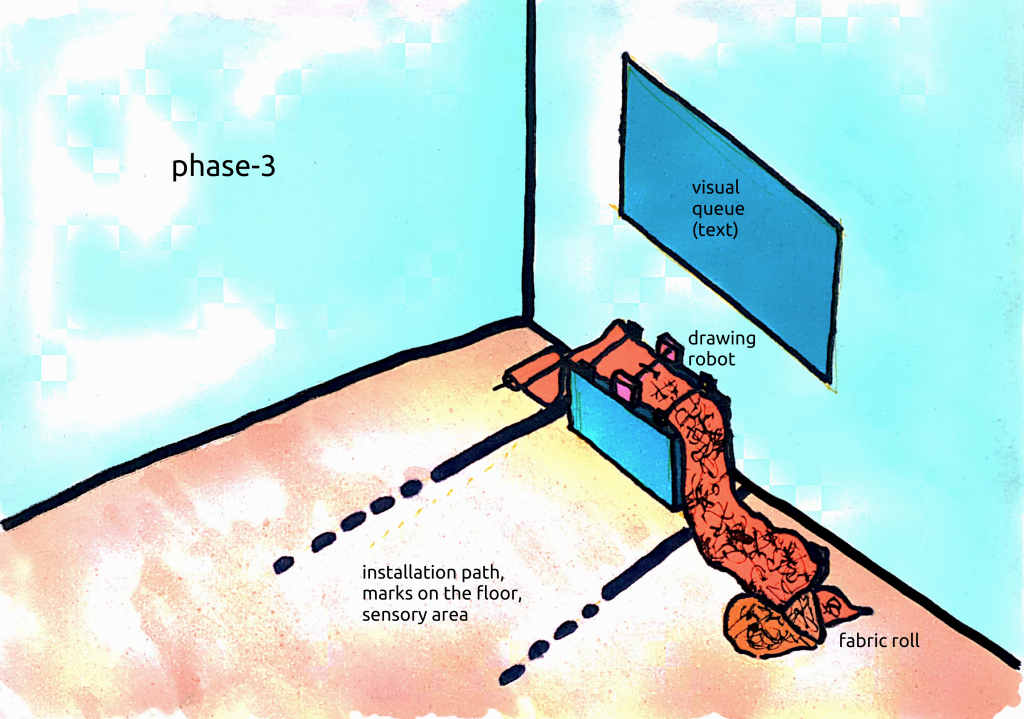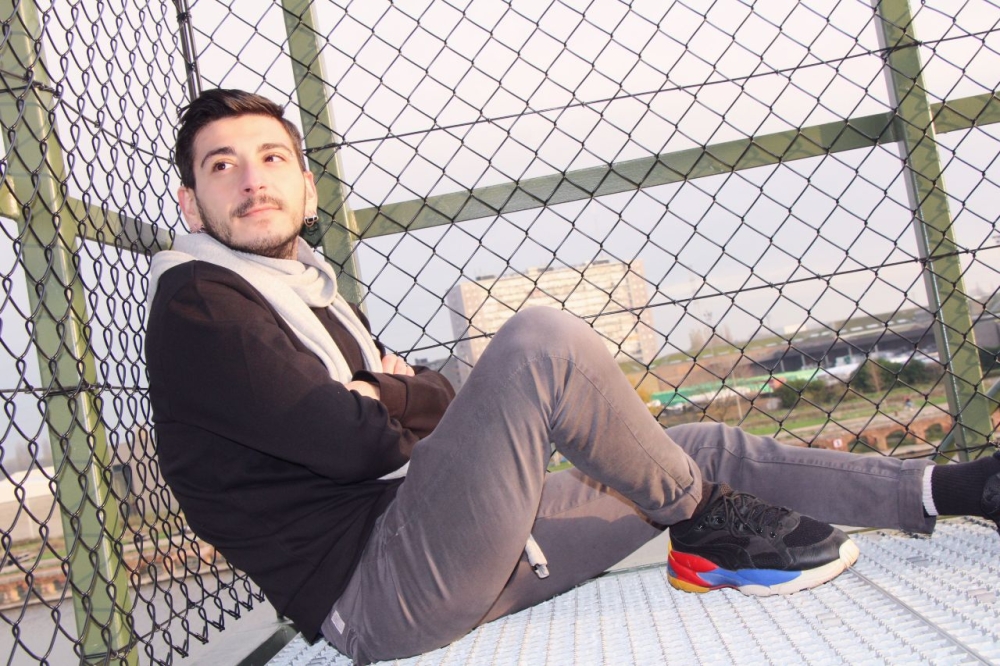I am an interdisciplinary artist based in Antwerp, with a background in architectural design. I am obsessed with the notion of “image” and use spatial components and a blend of digital and traditional approaches in my artistic practice. I employ various tools to express my vision, including creative writing, video art, photography, illustration, collage, installation, and, thanks to ODC, data processing and visualization. In my spare time, I often indulge in my love for chocolate and ice cream. Last but not least, I hail from Turkey.
How it all began
Artistically Exploring “Distance” as a Transformative Dimension
Measuring physiological and psychological states using biometric data to automatically capture portraits with the intention of defining and capturing emotions that are not easy to portray or recognize. Initially I will work with a simple heartbeat sensor to capture a portrait image of a model when a predetermined change in heartbeat rate is detected.
Prologue
One of the most common thoughts that we highlight about public space is that it defines an intersection of spatial and bodily movements while we, as people, encounter and perceive each other, and experience commons and events around us differently in urban and/or man-made physical setting. In the process of thinking about this definition, it is also important to unfold how the cooperation between people and spaces reflects itself in form of communication. This communication has multiple, complex, interconnected layers that showcase different social engagements, activated memories, provoked perceptions in new common experiences.
On the other hand, as we move in a spectrum of spatial contexts in daily life, from intimate space to personal space, personal space to social space, social space to public space, or with various other combinations, the transitions and relationships between them carve powerful impact on the formation of our thoughts. Eventually, the sensory interactions we are in during these cycles differentiate specific personal events in shared bubbles of participation. Our sensors transfer spatial storytelling coming from unique sources, and modifications coming from the received information. Through the sensory network, in public space, we shape our understanding of surroundings in a socially inclusive and non-restrictive setting. At the same time, our bodies become intimate spaces where we go through consensual processes. All happen in a multidimensional sense with many connections and transformations, as it is a network full of nodes, or a living organism. And, when this network of events has an unexpected cut in its processing, public space can become a battleground of conflicts.
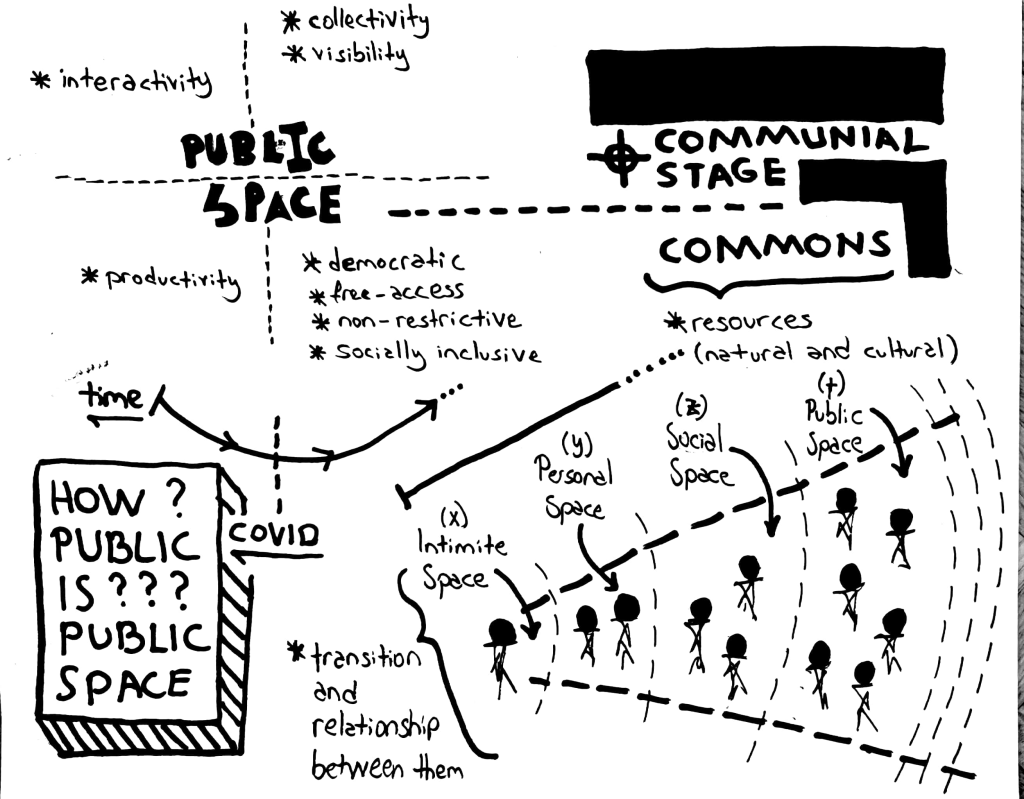
As we have been experiencing the reality of social distance since the pandemic started, our social participation in public space has become disturbed due to conflicts that occurred. Under this restrictive setting, social distance and spatial distance have set questions that our sensory world awaits, such as: How do we perceive distance spatially, how do we respond to it and how do we share it? What kind of phases do we pass for communicating as distant figures towards each other?
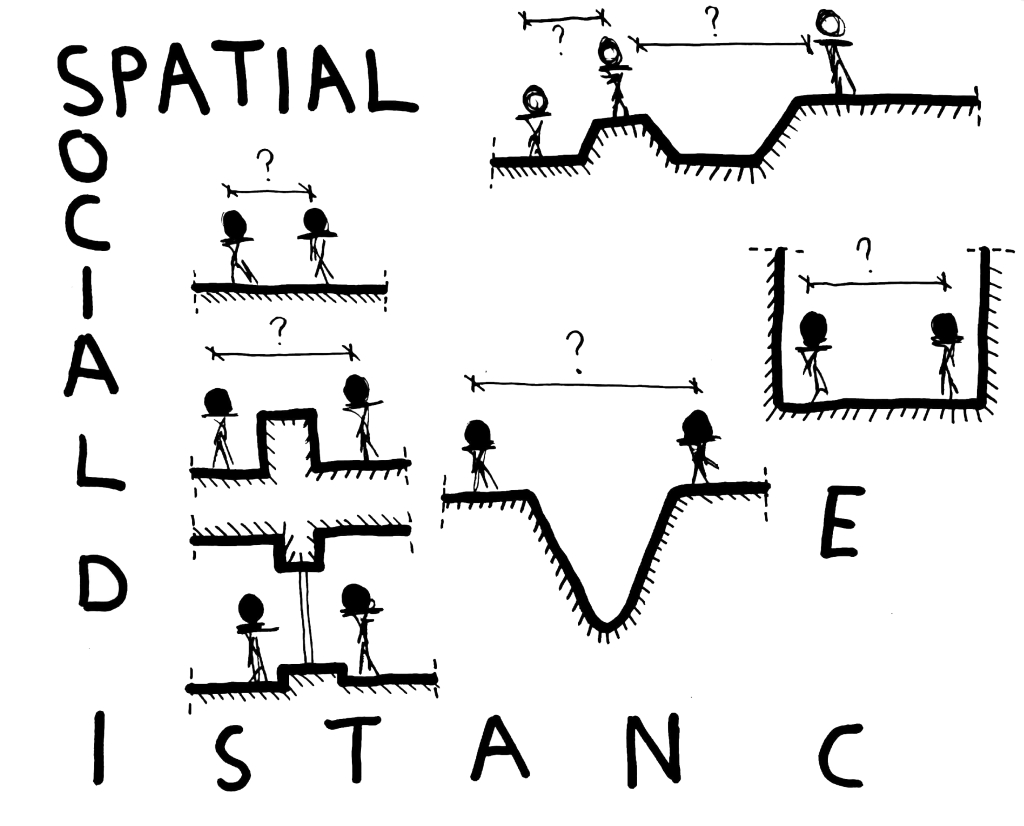
Methodology and Construction
This research idea has been conceptualized as an artistic research-based outcome during Open Design Course (ODC) Lab Version 4.0 https://opendesigncourse.be/. It consists of both digital and physical phases that collaborate within the scope of visualizing “distance” collectively through our senses. Especially, considering the operation of measuring distance is a group of data coming from signals and a specific environment, this research tries to create alternative thinking, especially, about the perception of it. It questions how distance might visually appear and how we communicate with it. While opening the discussion through public space, the core of this research relies on individual understanding of re-imagining the visuality of distance.

In this research, the process of illustrating distance through the transformation of our senses has four main and interconnected layers which also refer to the final installation. These are:
- triggering with a visual queue
- bodily interaction
- translation of performativity
- visual outcome
The process of translating numerical data based on our bodily movements and visualizing it afterward offers an experimental method for measuring distance. These processes feed each other in every step and respond to the level of interaction received. The result of interacting becomes represented by different visual agencies. The main steps arising from this artistic research and art installation reflect questioning processes for us about how we think of distance and how we participate in the performance of it based on our different ways of perceiving.
The core idea of visualizing distance focuses on experimenting on diverse perspectives by combining digital technologies with traditional outlines as a maker approach. Understanding the translation between these systems gives the fundamental structure to this research. All of the digital episodes are molded with open-source software. In addition to that, a unidirectional laser range finder based upon time-of-flight (ToF) technology and a pen plotter collaborate with the data coming from software to create a visual outcome. The drawing robot exports the visual translation on fabric canvas. This outcome represents a tangible communication method towards its audience. The software and tools used for these steps are:
- Arduino electronic prototyping platform,
- Processing (programming language) programming environment and graphics library
- TFmini LiDAR (ToF) laser range sensor
- pen plotter (drawing robot
- fabric canvas (roll of fabric)
Three main drawing patterns represent three ranges of measurements, and these patterns don’t try to look attractive in this process. They come together while the sensory interaction happens as they are different components of an alphabet, and reflect some clues as the whole combination is a paragraph telling us a story about how distance might visually appear.




Interactivity and Translation
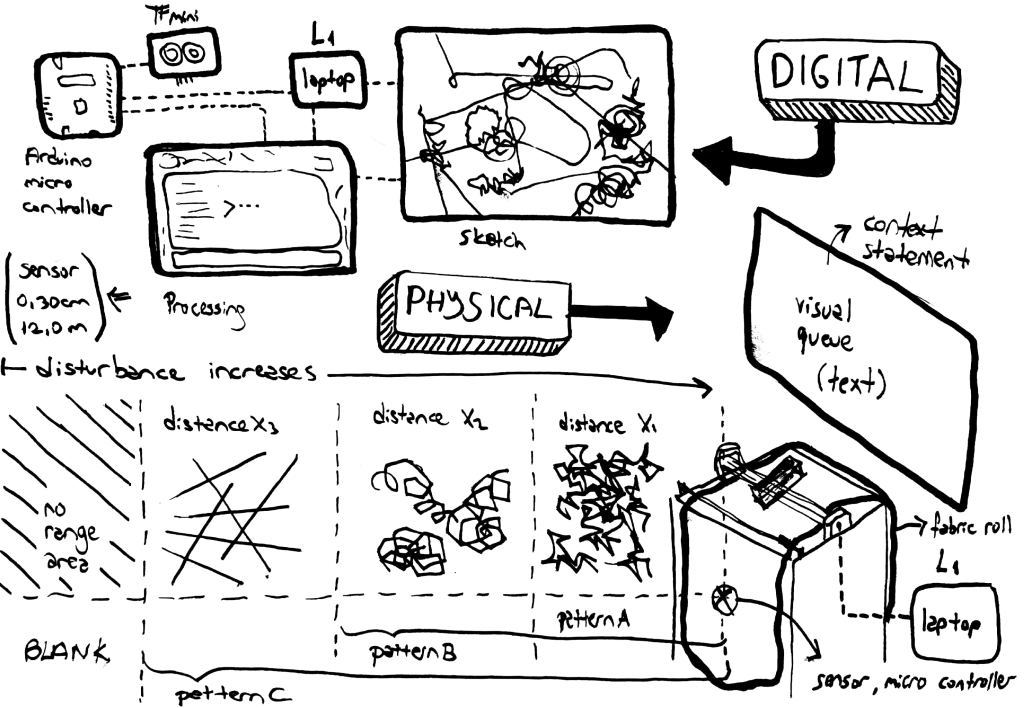
The whole system reflects itself as an installation, and in the process of this, a textual visual queue attracts the audience for interaction.
2. While the audience gets closer to it, the sensor detects the measurement and sends data to Arduino.
3. Arduino processes this information and sends it to Processing.
4. Based on the input, Processing decides which visual pattern is going to be plotted, and translates data for the drawing robot
5. There are three different visual patterns for the different ranges of distance measured by the sensor. These patterns have significant attributes, and they are assigned to different measurements.
6. After the measurement is detected and the pattern is activated, the pen plotter starts drawing continuously, and every time new data is received that can change or stay stable. While nobody is in the range of three ranges of distance measurements pen plotter stops drawing, and it resumes the same procedure when somebody is in the range.
7. Fabric canvas is a roll of white organic fabric. This canvas is going to be rolled periodically, and in the end, it will be a visual component that is an alternative way of translating distance (panoramic and collective image).
Phases of the Project Execution
Critical thinking behind this project showcases its context in different phases. Analyzing the idea and conceptually setting the structure up, and intercommunicating with the learning process that comes through ODC have been a fundamental combination of two parallel concepts.
- theoretical phase: Examining and re-imagining “distance” and narrations that come with it (ODC)
- phase-1: Understanding digital open-source tools and visualizing the research with them (ODC)
- phase-2: Experimenting with a drawing robot and a canvas to question tangibility (work in progress)
- phase-3: Setting the art installation in a spatial setting (work in progress)
Epilogue
“… how people from different cultures not only speak different languages but, what’s possibly more important, inhabit different sensory worlds. Selective screening of sensory data admits some things while filtering out others, so that experience as it is perceived through one of set of culturally patterned sensory screens is quite different from experience perceived through another. The architectural and urban environments that people create are expressions if this filtering-screening process. In fact, from these en-altered environments, it is possible to learn how different people use their senses. Experience, therefore, can not be counted on as a stable point of reference, because it occurs in a setting that has been molded by man.”
The Hidden Dimension by Edward Twitchell Hall
With the guidelines of the interaction between body and space, this artistic research tries to unfold how we can perceive distance as a dimension while researching through visually imagining, collectively experiencing, and making.
